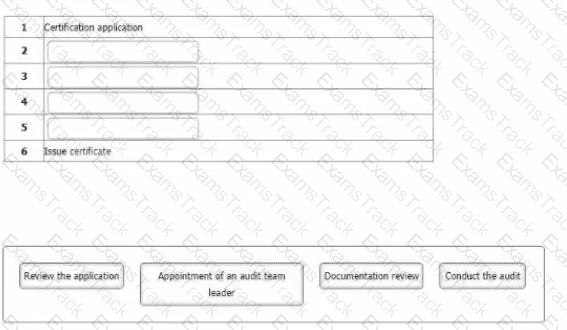On behalf of a certification body, you are conducting a combined audit of Shelf-Fit. The organization designs, manufacturing install interiors for retail stores. They employ subcontractors for the installation work.
Representing the ISO 45001 audit, you ask the Purchase Manager about the identification of health and safety hazards for contractors on site. Having previously reviewed the hazards list (HZD-21/11 Rev.3), you found that various health and safety hazards were listed but not were associated with contractor working on-site.
When you ask about the use of contractors, the response is, ‘’We know that contractors use chemicals, such as glues, paints and vanishes. We trust them since they know more than we do about the safe handling of such issues’’. The auditor made the same enquiry to an accompanying member of the health and safety team and was told that chemical safety had never been a problem with the installation process.
During a second-party audit at a sawmill, you find that the OHSMS Manager conducted the hazard identification process. In the risk assessment report, hazards were listed as physical hazards, chemical hazards, biological hazards and psychosocial hazards, with the hazards categories as low medium and high to be addressed. The OHSMS Manager did not have an action plan for low and medium risks, saying that they ignored those He stated that they brought in a health and safety consultant to advise on treatment for the high risks.
When interviewing the OHSMS Manager, the auditor presents a nonconformity relating to potential hazards In the factory If the dust extraction system broke down. The OHSMS Manager said that. If that happened, the agreed planned action is that workers would put masks on.
Select one of the options for how the auditor should respond to this statement.
An audit team leader is interviewing a member of top management in respect of the organisation's performance evaluation processes. It is clear to the audit team leader that there is some confusion as to difference between monitoring and measurement.
Which three of the following statements by the member of top management are correct?
You are an audit team leader overseeing the activity of a trainee auditor. Your team has just completed a surveillance audit and is assembling the final report.
The trainee has not contributed to a final report before and is clearly struggling with what she should provide to you for inclusion.
Which three of her following statements would be appropriate?
You are an audit team leader conducting an ISO 45001 Stage 2 audit of a nautical college that provides courses for those working in the maritime sector. The College Principal is absent, and the Deputy Principal represents top management.
At the closing meeting attended solely by the Deputy Principal, you inform him that you have found numerous gaps in the OHSMS processes which constitute poor planning and control of the OHSMS. Your team raises a large number of findings including major nonconformities, minor nonconformities, and opportunities for improvement.
Select three of the options which would represent major nonconformities from the evidence described.
You have been assigned by the audit team leader to evaluate the process of complying with application legislation.
Which three of the following statements about the evaluation of compliance are true?
During a second-party audit at a sawmill, you find that the OHSMS Manager conducted the hazard identification process. In the risk assessment report, hazards were listed as physical hazards, chemical hazards, biological hazards, and psychosocial hazards, with the hazards categorized as low, medium, and high risk to be addressed. The OHSMS Manager did not have an action plan for low and medium risks, saying that they ignored those. He stated that they brought in a health and safety consultant to advise on treatment for the high risks.
When interviewing the OHSMS Manager, the auditor presents a nonconformity relating to potential hazards in the factory if the dust extraction system broke down. The OHSMS Manager said that, if that happened, the agreed planned action is that workers would put masks on.
Select one of the options for how the auditor should respond to this statement.
When calculating an ISO 45001 third party initial audit duration, which two of the following statements are false?
The following options show key actions involved in a third-party audit. They are not in order. Order the stages in the table to show the sequence in which the actions should take place.
To complete the sequence click on the blank section you want to complete so it is highlighted in red and then click on the applicable stage from the options below. Alternatively, drag and drop the options to the appropriate blank section.
These stages take place after a certification application.

Select three options that would provide evidence of conformance with clause 9.1.1 of ISO 45001.
|
PDF + Testing Engine
|
|---|
|
$66 |
|
Testing Engine
|
|---|
|
$50 |
|
PDF (Q&A)
|
|---|
|
$42 |
PECB Free Exams |
|---|

|